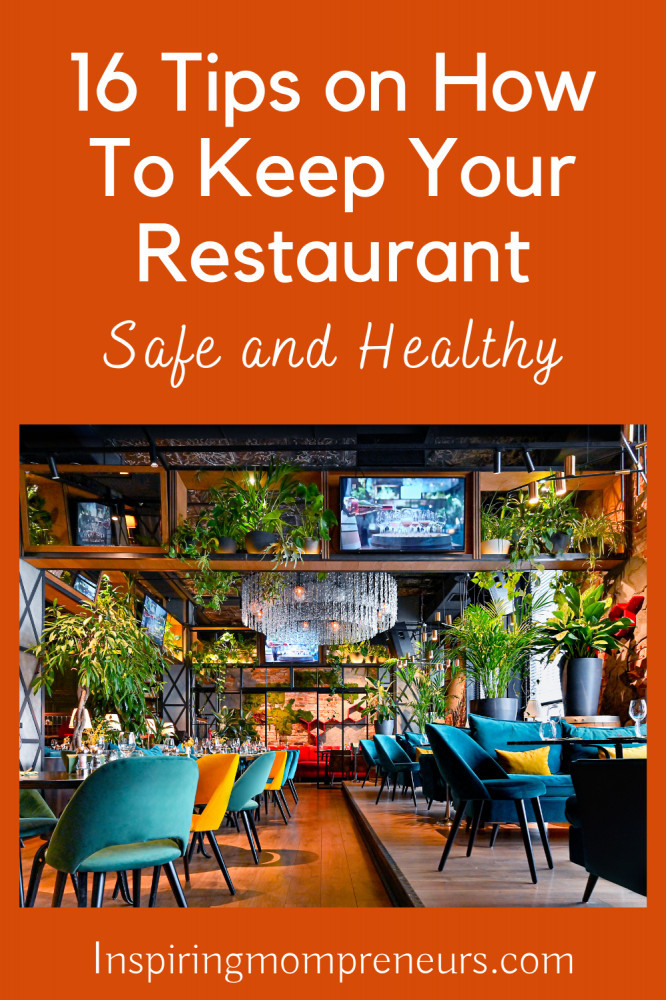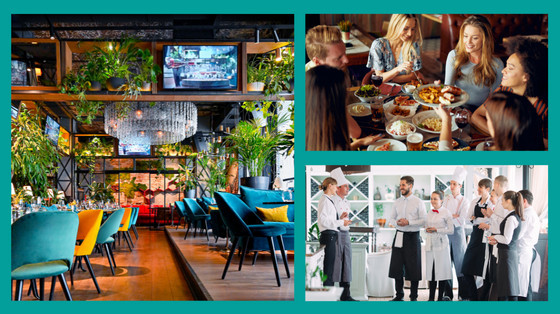In today’s post, we are sharing 17 essential tips on how to keep your restaurant safe and healthy. When it comes to operating a restaurant, health and safety should always be a top priority. By taking some simple precautions, you can help ensure that your establishment is a safe and welcoming place for both employees and customers alike.
16 Tips on How To Help Keep Your Restaurant Safe And Healthy
 1. Keep Your Kitchen Clean
1. Keep Your Kitchen Clean
This may seem like a no-brainer, but it’s important to keep your kitchen clean at all times. All surfaces – including countertops, floors, walls, and equipment – should be cleaned by commercial kitchen cleaning & maintenance services on a regular basis. If possible, designate certain areas of the kitchen for specific tasks (e.g., one area for preparing raw meat, another for cooking). This will help prevent cross-contamination.
2. Keep Your restaurant Free of Pests
Pests can spread disease and contaminate food, so it’s important to keep them out of your restaurant. Inspect your premises regularly for signs of pests, such as droppings or nests, and take immediate action if you spot any.
3. Train Your Staff in Food Safety
All employees who handle food – from prep cooks to servers – should be properly trained in food safety. This training should include proper hand-washing techniques, food storage and handling, and cooking temperatures.
3. Sanitize All Surfaces And Utensils
All surfaces and utensils that come into contact with food – including countertops, cutting boards, knives, and serving dishes – should be properly sanitized. This can be done with a commercial sanitizer or a solution of bleach and water (1 tablespoon of bleach per gallon of water).
4. Avoid Cross-Contamination
Cross-contamination occurs when bacteria or other contaminants are transferred from one food item to another. To avoid this, keep raw meat, poultry, and seafood separate from cooked food and ready-to-eat items. Use separate cutting boards and knives for raw and cooked foods, and wash your hands thoroughly after handling raw meat.
Photo by Jay Wennington on Unsplash
5. Keep Your Hands Clean
Proper hand-washing is essential to preventing the spread of bacteria and other contaminants. Employees should wash their hands thoroughly with soap and water:
- Before starting work
- After handling raw meat, poultry, or seafood
- After using the restroom
- After taking a break
6. Store Food Safely
Store all food items at the proper temperature to prevent spoilage or contamination. For example, raw meat, poultry, and seafood should be kept refrigerated until ready to be cooked. Ready-to-eat foods should also be kept refrigerated, except for those that are served hot.
7. Cook Food Thoroughly
Cook all food items to the proper temperature to ensure that they are safe to eat. Use a food thermometer to check the internal temperature of meat, poultry, and seafood before serving.
8. Do Not Use Food That Is Past Its Expiration Date
Throw away any food that is past its expiration date or shows signs of spoilage.
Photo by shawnanggg on Unsplash
9. Do Not Serve Food That Has Been Dropped on The Floor
If food falls on the floor, do not pick it up and serve it. Throw it away instead.
10. Use Proper Storage Containers For Toxic Chemicals
Store all toxic chemicals in their original containers with the labels intact. Keep them out of reach of children and away from food preparation areas.
11. Post Emergency Information In a Visible Location
Make sure that emergency information, such as the number for poison control, is posted in a visible location.
12. Have a Plan For Dealing With Spills and Other Accidents
Make sure that you have a plan in place for dealing with spills and other accidents. This should include having the proper materials on hand, such as absorbent pads and gloves.
13. Use a Food Thermometer
Use a food thermometer for cooking food to a safe internal temperature. This will help prevent foodborne illness.
14. Do Not Use Bare Hands To Touch Food
Use utensils or gloves when handling food. If you must use your hands, make sure they are clean and dry first.
15. Serve Food Promptly
Cooked food should be served as soon as possible after it is prepared. Bacteria can grow rapidly at temperatures between 40 and 140 degrees Fahrenheit, so it’s important to keep hot food hot and cold food cold.
16. Have a Food Safety Plan in Place
It’s important to have a food safety plan in place to ensure that all employees are aware of the proper procedures for handling and preparing food. The plan should include policies and procedures for cleaning, cooking, storing, and serving food. It should also designate specific employees who are responsible for each task.
17. Bonus Tip: Don’t Forget Insurance!
Alright, so this one might be obvious, but you’d be surprised about the sheer amount of businesses, especially those in the catering and restaurant industry that just won’t even bother looking into restaurant liability insurance. You just never know what could happen to your restaurant, one small accident can lead to a disaster like closure. So that’s why you can’t forget about this.
Final Thoughts
We hope you have found these 17 tips on how to keep your restaurants safe and healthy insightful. If you own or operate a restaurant, health and safety should be your top priority. By following these guidelines, you can help ensure that your restaurant is a safe and healthy place for both employees and customers.





